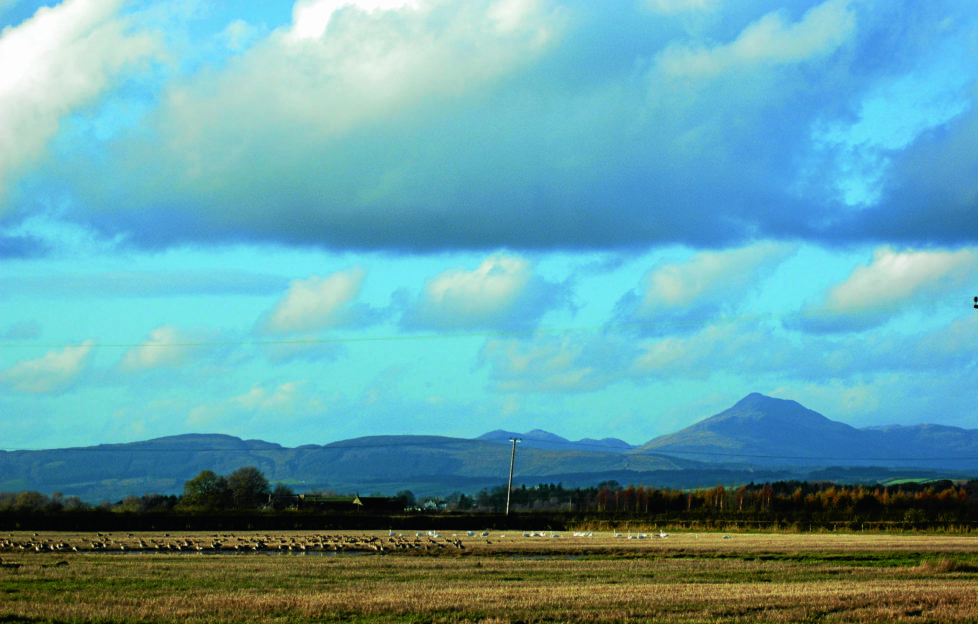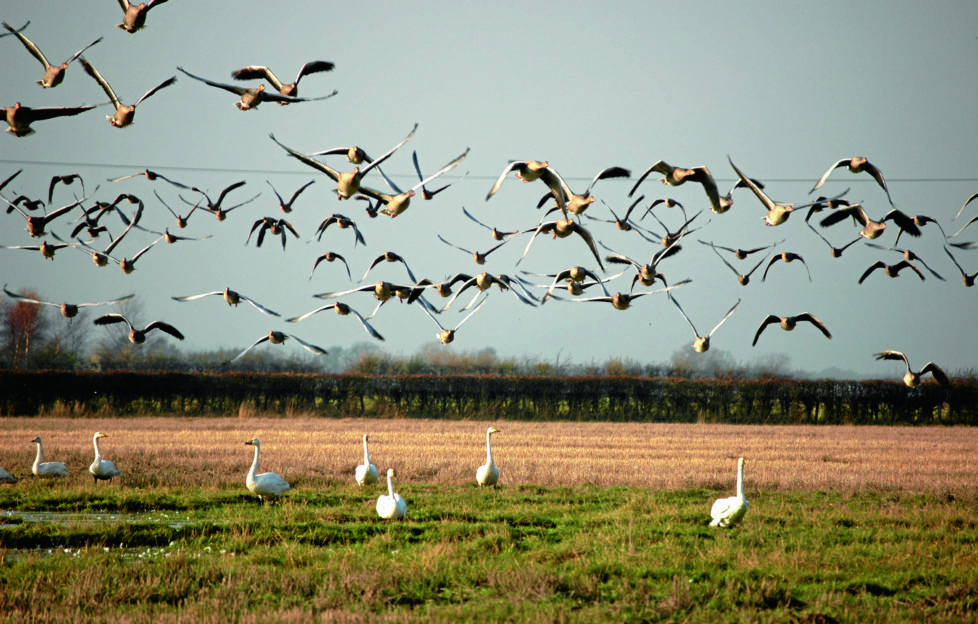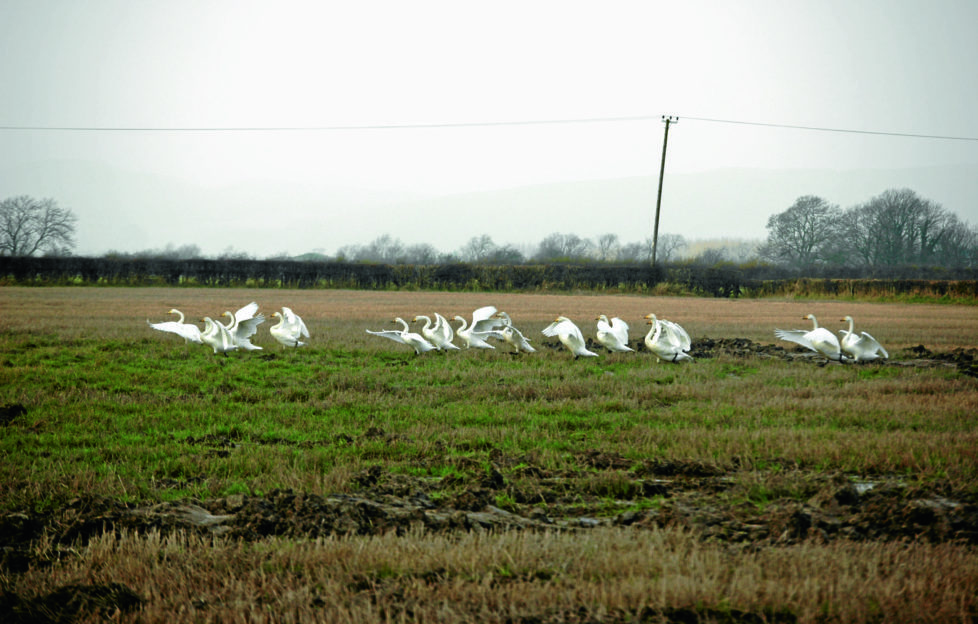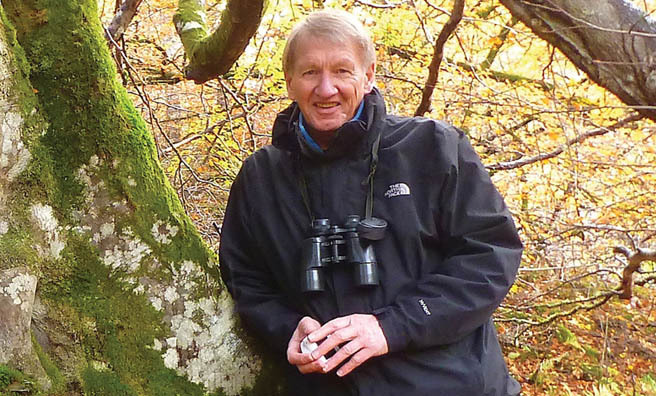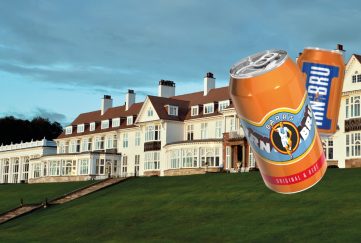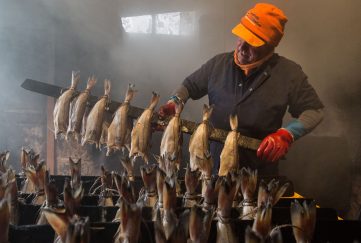A… Chaos of Swans?
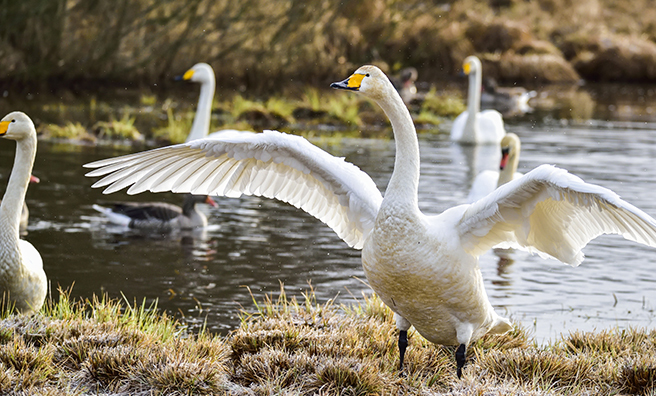
When startled by a microlight or helicopter, geese and whooper swans have an unusual and dramatically different response…
Sometimes the hardest part is getting into the passenger seat from the driving seat without leaving the car.
Leaving the car would alarm the birds, which is exactly what I was trying not to do. I had to change seats because if I had turned the car round instead, the angle, the light, the background and my general state of comfort and well-being would have been adversely affect, so I changed seats without getting out of the car, with a wistful memory of an old Vauxhall Victor that had a bench seat, a steering column gear lever and a dashboard-mounted handbrake. Now that was a car designed wit nature writers in mind.
As it was, I had coasted the last 50 yards to where I wanted to stop, slid the passenger window halfway down, then switched seats without sustaining self-inflicted injury, settled into the comfort of the passenger seat and used the top of the halfway -down window to rest the camera lens.
One hundred yards away, the drowsy objects of my attention barely raised a head or a murmur. So far so good.
I had been stalking this situation for days, but the days had not been kind – dark and drizzly, grey and grubby – the kind of days that seep icily into the spirit of nature and nature watcher alike. At last the wind shifted, the moon strode across the sky and the morning after was clear and bright, so I abandoned the writing desk for the flat lowlands of the Carse of Stirling.
Whooper swans like the Carse. Sometimes they settle in the same field for days, weeks if the feeding is good enough and if the field sustains half an acre of floodwater. The floodwater seems to be crucial, an essential element of their comfort zone.
For several days I had marked the gradual build-up of swans in just such a field until they had mustered 30 birds, and these were joined by fluctuating hundreds of pink-footed and a handful of Canada geese. A quiet B-road with a wide grass verge bordering the field, so I could get the car within a hundred yards.
“All I needed was a bright morning.”
The field was in stubble and all the swans and two or three hundred geese were clustered around the floodwater. An arc of mountains stood clear and blue from west to north, Ben Lomond to Stuc a’ Chroin ad Ben Vorlich with Ben Ledi for a centrepiece. The sun bore low across the slabby, terraced ramparts of the Gargunnock Hills to the south.
Stirling Castle and the Wallace Monument on their crags and the gable end of the Ochil Hills terminated the prospect eastwards. There are worse places.
The swans began to stir. A group of six appeared to reach a consensus, got to their feet in unison and began walking in well-spaced single file towards the north end of the field, where they began to feed on spilled grain. At first the other swans either watched or dozed on, but over the next half hour they followed a few at a ta time until every swan was head-down in the stubble.
The geese were unmoved. A few bathed, most dozed. Morning ebbed into afternoon at the same serene pace. A mist drifted in and lay about the hidden river (the tranquil, looping meanders of the upper Forth). A sparrowhawk wheeled across the field and a distant tree fired off an explosive fusillade of 50 rooks. The hawk ducked down and vanished at speed, watched by 30 swans. The 50 rooks de-materialised as if they had never been.
Then a mechanical drone sounded in the west – an engine with a deep-throated throb. It grew louder over several minutes. The swans stood tall and listened, staring westward.
“The geese went slowly berserk.”
First they all stood, not just the crowd round the floodwater, but also two more large groups in the adjacent fields. Then they began to give voice, an anxious mutter that swelled to cacophony then to bedlam as a helicopter appeared low over the farm buildings.
The geese rose in clouds and headed straight for the car. The nearest birds passed a dozen feet above me, the air rocked with the rasp of wings.
The flock climbed and circled and called out in hundreds if voices. It was five minutes before the first of then landed again, five more before the last of them settled in among the crowd at the floodwater.
By then, the helicopter was lost to sight and sound. in all that time, not one swan had moved but they added a chorus of their own to the goose chorale, each “whoop?” with a rising, interrogatory edge.
The sun grew almost warm in the early afternoon. The swans resumed their feeding, the geese their loafing. There was another gentle half hour of tranquillity before the decisive movement of the day erupted. Almost inevitably, the catalyst was another engine, higher pitched, more strident and far more alarming for the birds – a microlight.
I can only imagine it was the appearance of such a huge wingspan so low over their winter domain that terrified geese and swans alike, but I was intrigued by the very different nature of their response.
The geese flew as before, criss-crossing hordes of them, for they joined forces as soon as they were airborne with their kin from the next field. But the swans did not fly.
“They ran.”
They ran as I have never seen swans run before. Running is invariably a prelude to take-off, body and neck stretched vertically. Not this time. After the first few strides, the swans brough their winds to bear just as an athlete pumps his arms. Their bodies and necks remained vertical and the wings beat horizontally, not to generate lift, but running speed.
Thirty swans made a flat-out beeline for the floodwater, where they gathered, wading or swimming, with their heads still high and voices raised.
Questions for the bemused swan-watcher in his car at the field-edge:
1. The microlight engine was quieter than the helicopter, albeit with that strident dimension, and it may have been that the tone, rather than the volume, unnerved the birds. But did the swans misunderstand that huge fixed wing for some kind of imponderable predator, an eagle from a nightmare.
2. I have watched whooper swans for more than 30 years, and not only have I never seen such behaviour before, I have never even heard of it. ut every swan reacted to the situation in the exactly the same way at the same moment. Was there a signal? Did it specify “run – don’t fly?” because in that particular circumstance they considered their best option was to stay on the ground?
3. And if so, what is the significance of a half-acre patch of inches-deep floodwater? What reassurances did that offer in the face of an attack by an eagle from a nightmare?
Answers were not immediately obvious. But sometimes, with a species you may have watched so eagerly for so many years, it is good to be flummoxed. You reappraise what you think you knew, you scan the records of others to see if they have solved a puzzle that you have not and when you draw blanks there you resolve to go out again, to go back, to sit and watch again.
Or you go to the river on your doorstep when it floods a square mile of glen and the whoopers and the goldeneye and the Canada geese home in on it all on the same day as if they have read the same smoke signals.
Stand among the birches at the lowest edge of the bank above the flooded glen after a cautious approach through trees brings you close to a group of swans you first saw from high above. home in on their sound. They give voice quietly, feed through the water among submerged grasses.
The light is going from the day, too far gone for photographs, which suits my frame of mind. Sometimes, taking photographs just gets in the way. So just watch, remember. Remember, too, that you have unanswered questions.
Suddenly their attitude changes. I have heard nothing at all, but every swan is staring past me at something behind my back. Now I can hear splashing. The swans don’t look alarmed, just intrigued, noticing. I crane my neck to see beyond the tree I’ve been leaning against.
Four red deer hinds have stepped into the shallows about 50 yards away. They wade and drink and mutter. Red deer are surprisingly vocal when you are close to them and the wind is in your favour. The swans relax again. They also mutter.
The deer voices are gruff, croaky, percussive. The swans trumpet softly, mellow as muted fugelhorns. Sibelius could have made something of the hour.
You see, if you go often enough, new things come your way. The unanswered question sometimes takes longer.
Catch a new Scottish wildlife feature from Jim Crumley in every issue of The Scots Magazine.
More…
Click the image below
to read more fascinating
past features by our
resident nature writer


